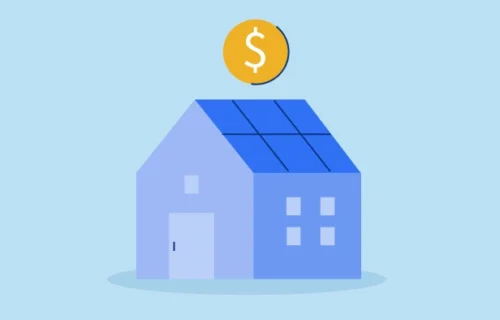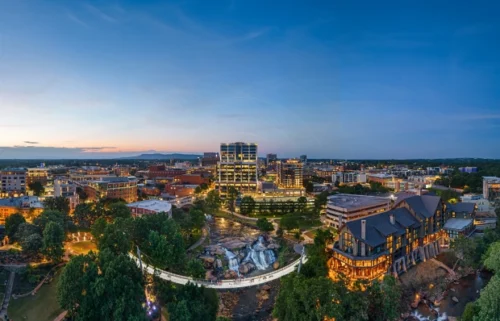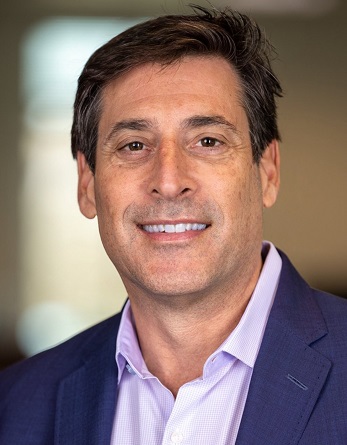
Connect with a Lima One expert today!
If you’d like to know more about this topic or see how it applies to your project, let’s talk.
Ep. 9 – How the Homebuilding Market Got Here & Where It’s Heading
Josh C. (Speaker 1)
Welcome to The Real Estate of things podcast. I'm your host, Josh Craig, CEO of Lima, one capital. And I'm your guest host actually. So for all of you, avid listeners out there looking for Dalton, don't turn me off just yet. We've got a great episode for you today. And don't worry, I'm just here for a guest one-time spot. Don't move back next episode. So today it's my distinct honor to share my guest podcast with one of the most respected and connected and genuinely great people in the entire investment banking and homebuilding industry. Margaret Whalen, CEO of oil and advisory and capital markets. So welcome to the real estate of things podcast, Margaret.
Margaret (Speaker 2)
Thank you, Josh. Good to see you today.
Speaker 1
Yeah, so fair warning, you are my first podcast guests. So lucky you first of all, and then I'm sure I'll stumble plenty. But Dalton told me that as long as we don't curse or offend anyone or bring any lawsuits or get his podcast shut down, then we'll call it a win. So we've got a low bar, and I'm sure we'll be able to overcome all those objections. So. So we've known each other for I was reflecting coming in this morning. We've known each other for about six or seven years. But typically, we only get a chance to catch up on stage at a panel or in a hallway at a conference. So I'm excited to get to spend a few minutes with you today chatting about this explosive homebuilding industry, in the craziest of times we're in, just share some perspective for our listeners. And, you know, when I was thinking about interesting guests to join me here, you immediately came to mind, you bring such a unique perspective, from seeing all sides, the industry and your work with growing homebuilders and large flippers and aggregators, and how those operators interact with the capital markets in Wall Street. So just a really cool perspective. So first, let's help us set the stage a little deeper that with some background on you, and your company, so maybe you can just share a little bit about your company and, and your specific niche.
Speaker 2
Sure. Thank you, Josh. And thanks to Dalton and the team for including me as your first guest speaker on the podcast. So my background is that I have been an investment banker working on Wall Street representing construction and real estate companies for my whole career now, which is nearly three decades, I had been at UBS for over 10 years and at JP Morgan for about eight years. And in 2014, I started my own business we own advisory capital markets in the goal was to offer a higher level of service to a smaller group of clients. Because what happens when you work at the big investment banks is that you're more focused on volume versus actually success on behalf of the client. And I had a goal, really a vision for the business was very different to anything that I was seeing, because I like my clients so much, and I love the business. And it's I appreciate that use the word interesting to describe what I do, because one of the things I screen for with my clients is if the business is interesting to me. So because of that, we split our time almost evenly. In representing either construction companies or home builders, we only work on the sell side or the operator side, we don't work for buyers or investors. And then we also split our time almost evenly between raising capital versus representing a company that's ready to sell.
Speaker 1
got it got it. Very, very interesting. So and he shared a little bit about your past life. But I'm always interested to hear the story of how people either got started in real estate, how they chose it or how it chose them. So what led you down the path to get in initially
Speaker 2
But when I started my career in 1994, I graduated from University College of Dublin in Ireland and I was recruited by Merrill Lynch to come over and do a essentially a training program, Graham, I guess, within the Investment Bank, and I worked for a team that focused on oil and gas. And all of the senior executives on the team, the bankers, and the analysts had PhDs in geology, which is something that I didn't have I wasn't interested in. And then over the next couple of years, I moved into working on the homebuilding and construction team, which was something that was super interesting for me, I think, in part because as an immigrant to the US, the opportunity for homeownership was attractive to me and then being a part of the whole cycle of that. And the opportunities in the US, I think for women and women in construction and finance are greater than they are in Europe, as well. So all of that came together. And then there were several times over the course of my career where my industry choice was questioned in particular going into y2k, Josh, you're probably way too young to remember y2k. But everyone decided that they probably in high school, everyone on Wall Street decided that they should go to Silicon Valley, or go and work for a tech company and everything had to be tech related. And there were lots of homebuilding executive As a jumping ship homebuilding investment bankers, construction bankers jumping ship to go to California, and, you know, make their fortunes on the tech side of the industry. And of course, none of it worked. Nothing has really evolved, unfortunately in the housing and residential real estate world in terms of leveraging technology. So a lot of people then did what they call b2b, which is back to banking, or b2c, which is back to consulting. And I wrote it out, I studied, I was at UBS at the time as an equity research analyst through y2k, and then through the early 2000s, with Sarbanes Oxley and a wall went up between investment banking and equity research. I had started my career in equity research, but there really was no wall. We were very detail oriented. I worked for a team and investment banking team was very successful on the transaction side. And that was the part of the business that was most interesting to me. So as the wall went up between research and banking, I decided to jump from UBS to JP Morgan as a managing director, same Rolodex, same clients, but with a similar, slightly different job description.
Speaker 1
Interesting. Yeah. So we definitely have a lot of parallels. I'm an immigrant as well. So I'm from Canada. I didn't we worked in the in the you worked in the geo oil space, I did not. I've worked in biofuels a little bit. But a farming background we worked with on the land and found our way to real estate. So it's always so interesting to hear. Very rarely does anyone go through, you know, the early years thinking they're gonna spend the world and their life in mortgage and real estate, but amazing how people always just tend to find them selves here, and some really cool stories about how we all got to this place.
Speaker 2
So I love the business and the opportunities that it provides for stability within communities and for families, especially immigrant families, that you and I have created. And it's a simple enough industry, but because of the cyclicality, the seasonality, the leverage the cycles. It keeps us all on our toes, right?
Speaker 1
Absolutely. Yeah, we know we talk about it all the time. Hear about you, although, you know, it's to your point. It's really a simple industry, whether we're lending money or building houses. It's not that complicated, but we really leaned into it as a noble purpose, right? We're providing housing stock for America, we're rehabbing, rehabbing properties. We're restabilizing neighborhoods. So we really lean into that as a company I think a lot of us do across the industry, which is why we get to meet so many interesting, interesting people and why we have built some, some great companies along the way.
Speaker 2
so I love the background of Lima one Josh, you know, being started by two Marines, because it's so important to welcome veterans who go out and put everything at risk and put their careers on hold. Welcome back. And back into the industry. So I love the background of your company, too.
Speaker 1
Yeah, I appreciate that. Yeah, we I certainly leaned into it when I was looking to join. We talked about it all the time. Most of our conference rooms are named after whether some submarine heritage so it's something we're really, really proud of, and hold to hold dear. So. So let's tie it in. So we've got a really diverse listener base, Margaret, we're now a few months into this. And they just like our client base ranges from small entry level investors and home builders, doing a few transactions a year to large scale and home builders who build hundreds of homes per year. But regardless of place in the industry, the questions I get asked all the time, kind of fall around three broad topics, one, just general markets perspective about where we are about a look into our crystal ball to about the financing side of things about what's changing, what do we need to know? How do they get more for less, tends to be the ankle? And then three kind of segments of industry? Where is it heading? building types this, you know, buzzword of the decade build for rent, this blurring of lines between builders and landlords, flippers and wholesalers? So let's I think we'll have a good conversation kind of weaving those three general lines, broad topics, I should say, into some questions. So. So let's talk about big ones, three big ones, for sure. So I'm sure we've got way more than we have time for but we'll see what we can get to and how to keep everyone on their toes. So let's talk about the broad market as a whole first, you being you know, extremely dialed into all pockets of the country. I know you don't just focus your base on the east coast, but you certainly have clients from coast to coast and you know, from builders to large flippers, you know, what is your crystal ball tell you about where we are in the overall homebuilding cycle. And I know, depending on the talking head that you listen to, you know, we're somewhere in the two to 4 million homes per year short of demand. It looks like we need somewhere in the neighborhood of another 10 million homes the next decade for rental properties. So on the surface it appears that we have a really long runway ahead of us that we have a lot of green pasture. But what do you think? What's your perspective of where we are in the overall cycle?
Speaker 2
Well, it's definitely a hot topic right now, isn't it? I was in New York last week I spoke at two different conferences, the John Burns annual housing Outlook Conference. And then Lincoln International, one of the boutique m&a has invited me to speak about m&a and housing and construction. So in terms of the general market perspective, having been around this industry for 30 years, I'll tell you one thing for sure, which is that you only know the market, peak or draft when you're looking in the rearview mirror, right? There's a lot more space looking out in front of the windshield versus the rearview mirror. And I always try to focus on the future. But I believe that we are under supplied, I believe there's a lot of demand, I believe there's pent up demand for housing, I don't have a clue if it's 1 million, or 2 million or 5 million. I really trust the research coming out of the John burdens team, I've always felt that they are more independent, more analytical in how they approach that. And some of the trends that they referenced at their conference last week, for example, were the fact that even though we know mortgage rates are going to go up. And that's definitely going to put a squeeze on affordability, because monthly payments will spike even off a little base as rates go up, that there is still very wildly millennials in the market right now for housing, some of whom would be buying their first home. But it's not a typical first home purchase, meaning that it would be a smaller, less expensive home in the suburbs. Because a lot of these individuals have been able to save over the last couple of years, they haven't been going out as much they haven't been traveling, they have been having big weddings, they're able to work from places that they wouldn't have worked from before because of the trend towards work from home, which seems to be permanent. And then also because a lot of student housing or student loans have been forgiven. And so I think that you have a lot of affluent consumers coming into the market, there was definitely a slowdown in immigration because of COVID. But we just saw this week, international borders are starting to open up again. And for folks like you and I are educated overseas, we came to the US for opportunity. We know there's pent up demand, and those tend to be affluent, educated individuals coming into the housing market. So I feel like as far as we can see, there's very little inventory, there's a lot of demand. There are natural supply constraints that we probably haven't experienced to this degree before. Whether it's volatility and availability of construction materials, sticks and bricks, whether it's the aging and graying of the US labor pool for construction, which is a whole topic on its own. But that is limiting supply. The second part of your question after my views on the general market was about financing, financing. Of course, it's super attractive right now. And it's not just the fact that rates are so low and spreads are tightening and home values are going up. And all of that is leading to really rockboard Advance rates on debt, whether it's equity or debt, but the availability of the capital is higher than it's ever been before. We've also seen the US housing market emerge as a bright spot in the global economy over the last two years. And that has encouraged a lot of capital come in from Asia, for example, we worked with a large builder in Texas, over the last 18 months announced a transaction in July this year, they were acquired a half a billion dollar transaction by di o house, one of the largest real estate companies in Japan, which has a significantly lower cost of capital than we do as a housing company publicly listed in Tokyo, but also as a borrower in Japan, where rates are even lower than they are here in the US. So the financing is there, the advance rates are higher, that often can lead to risk in the market over consumption bubbles, but we're not seeing it as of yet. And then your third question was around built or rent.
Speaker 1
We'll get into builder and I think you just hit on a bunch of interesting topics. One, the affordability concern Israel, right, I think, not only you know, as is just as interest rates start to tick up. home price appreciation could only go so much further north. What's that gonna mean? That's really interesting topic that we could debate for a long time. The other point you just made about risk is something that we talk about a lot as a lender. When you see this insatiable demand for loans for volume, you see some lenders starting to make some questionable decisions. I think we saw this movie play out in 2005, six leading into seven and eight meltdown. I don't think we're anywhere near that yet. Don't get me wrong. I don't want to get any crazy headlines. But you see the same type of decisions being made about how do we differentiate ourselves and there's only so many things you can do so we feel that it's a real risk to the industry is lenders get out of control and make Some decisions they wouldn't otherwise make.
Speaker 2
the thing about it is that even if the lenders go crazy and didn't learn from the last downturn, it doesn't matter, because it's so hard to finish a lot right now to develop or get in title, get it through the process, so you can build on it. And then you can find sticks and brakes, and you can find labor. So there's a natural constraint on the supply side versus demand.
Speaker 1
Good point. Yeah. So I mean, how do you see that imbalance shaking out? Like what is the next 1224 months look like? Are we able to, I think you've seen from a starts and permits, things are ticking up, I've been trending the right direction for the last year or so do you see a kind of a leveling out of starts are still this kind of up into the right? As builders try to catch up from where they were left off for the last few years?
Speaker 2
I definitely think starts our lead indicator, right by about six months of demand. And I definitely think we're gonna see starts continue to grow over the next couple of years, there's no reason to believe that we won't.
Speaker 1
Yep, I fully agree on the on the who started those houses. One of the status a couple of years ago, and I haven't seen it published since is the who is building houses. And I think the last stat was somewhere in the neighborhood of 60 to 70% of all the homes built in the US are built by, you know, quote unquote, a small home builder, someone who builds less than a couple 100 houses a year. Do you feel that being the same today? Or have you seen a lot of m&a or a lot of these smaller builders kind of pushed out because of their inability to get a lot? First of all, they're not developers, or whether they can't get supplies? They can't hedge out contracts, and they can't scale up? What do you what are you seeing today? are small, the small guys still really prevalent? Are they kind of pushed out?
Speaker 2
That's a great question, Josh. So the thing about it is that of the million or so starts a year, so much of that is concentrated in the top 40 or 50. Msa is around the country, what we call us refer to it's a small market. Within those markets, it's incredibly concentrated markets like Tampa. Some of the four MSA is in Texas, where you could have 60 70% of home starts represented by the top eight or 10 builders in the market, major concentration. So then the barrier to entry is very high for smaller private builders, which is putting them into maybe C or D locations or different types of product to try to differentiate themselves. But that is a trend. I mean, I remember when I started my career in the early 90s, in this industry that top 10 builders had about 10% market share overall. And today, it's 40. So well, I imagine that it's going to mature at some point, you know, because they're just their markets, concentrated markets where demand is great. And where there's a real benefit to being a high production builder. And that's where the builders tend to focus their efforts versus parts of the country like the Mid Atlantic or the Midwest, or even California right now, where you have negative demographics, you actually have more people leaving then migrating into those cities.
Speaker 1
Yep, no, it's right. And I know you work with a lot of scaling builders, as they're looking to, you know, raise equity or, or kind of grow up the capital stack. Are you seeing a lot of these smaller builders? Would because of the scarcity of lots, are they branching out to also become, you know, an infill fixin flip builder, or they also becoming a land developer? Are you seeing, you know, diversity of business models now starting to become more of the norm?
Speaker 2
Well, that's what you're hoping for, right? So we can find a deal to work on together. So going back to what you and I were talking about a little while ago, in terms of interesting business models, one client we had in California about five years ago, Thomas James Holmes, which was an infill builder, tear down builder, a scraper. There's different ways of describing what they do. But I remember explaining to an investor because we were representing Tom and Jim on selling the company, that these this business was the biggest homebuilder no one had ever heard of, right, they'd have a billion dollars in annual revenue, but they're only selling about 100 homes a year because the price point was higher. So the business model was where they started was to go into West LA and buy a 50 plus year old home for a million or so dollars. And within 14 months, Allah brand new home on the same lab for three to 5 million. Now we're doing that up and down the coast and over into the Rockies and Phoenix. We have clients doing the exact same thing on the east coast as well. I think it's a fantastic business model. In particular, California has relaxed some of the rules around zoning right now to the point that you can replace one single family lot with two new homes because of the affordability constraints. Some buyers are owners of dirt are doing that. With townhomes. Some are doing it with a traditional single family home and then what we call an adu and XL accessory dwelling unit on the same parcel. But I do think those business models are very interesting and it's really the blue ocean theory you know where strategy is that you go where others are not that the strategy of the blue ocean is go where there's less competition. And we're definitely seeing some smart, thoughtful young executives come into the industry with strategies like that.
Speaker 1
no, we love those customers as well. We think it's a great strategy, I'll be it difficult to scale, which is why there's ability to white is a bit of a blue ocean still, right? How do you recreate that re highly repeatable, scalable company, which is the challenge, but for those who can figure it out, and manage it like it is, we're all on one development and have highly repeatable great teams that can go and repeat the same process over and over? It's a great model. On the development side of things, are you seeing more builders become both the developer builder or is still you know, buying finished loss? Is that a thing of the past are we still able to actually get some are the Nationals describing everything that's, that's out there and available?
Speaker 2
Well, the control in the industry definitely sits with the owners of the dirt right in so you have lots of different financing available around dirt, you have to take entitlement risk, which is significant in some parts of the country like the coast, but much less. So in parts of the country like Texas in the southeast, where zoning officials are a lot more commercial and flexible, then you have to get the dirt developed, which means actually moving land, putting in the infrastructure to get to the point where you have finished lots. What I would say on the homebuilder side coming out of the GFC, the downturn last cycle is that many of them benefited significantly coming out of the GFC versus coming out of the SNL crisis in the early 90s. Because instead of only 100% of their dirt, half of it was optioned, and you're still seeing that, in fact, it's been a very challenging market to call for the last few years. I remember in June of 2018, when rates jumped up and home sales slowed really sharply. And because of that a lot of the builders slammed the brakes on buying dirt, they were controlling more dirt off balance sheet via land banking, land banking is very popular right now kind of cycles a little bit, but it's very much in vogue right now. So we're definitely seeing the trend towards off balance sheet seller financing of dirt, but that I don't believe that's the reason that the availability of finished lots have slowed down. I think it's more just the bottleneck relative to demand.
Speaker 1
Yeah, no, it's uh, I like your comment he owns the owns the dirt controls the market? That's definitely accurate. So you started taking me down? Next train of thought was on the capital side of things, and how builders are financing themselves these days. So that capital stack, whether it's what kind of trends you seeing in terms of debt, or equity or land banking or medicine financing? What, how are these guys evolving with the times and finding the capital to help them scale
Speaker 2
debt or equity or debt equity, as they call Ms. And so it really depends on the size of the builder we have over 20 publicly traded home builders today, including a couple of new ones. Dream finders went public via traditional IPO. lancy went public in the last year via spec. And then we have some private builders that have publicly traded debt like Madami or Ashton Woods, David Weekley. And then what we find is where we add a lot of value for clients, private builders that are outgrowing friends and family money they're pivoting the growth is accelerating, they're not turning the capital as fast as they need to. And so they will approach us and say we need growth capital. And then we sit and help them think through what their three to five year model might look like what the p capital need might be, how much leverage they're comfortable with relative to the p capital needs a helmets going to be dead, how much is going to be equity, and then grow it out from there. And I would say that the sources of capital are changing a little bit as I mentioned earlier, the Japanese buyers coming in which is a very attractive valuation up front selling to a strategic with long term capital. The Japanese are known for not changing anything, not changing the management teams not changing the business plan, not reducing the workforce, which is very important to a lot of these legacy builders that are have that have built up a culture and a community within their company in so I would say the available the only big thing that's changed is the Japanese coming in buying outright which provides growth capital we represented a company called true mark one of the larger private builders in California a couple years ago on their sale to a Japanese buyer and that was because they wanted to accelerate the growth. They needed a long term capital. And then separately land banking. We actually worked for two different teams over the last year Setanta development company and land strategies management to introduce them to providers of debt that they would then use to land to the homebuilders in a land banking format.
Speaker 1
Got it? Got it in Again, no, it's something we get asked about all the time or is she Are we willing to stretch outside of work normally just to, you know, firstly mortgage senior debt, but we get asked all the time for some creative things and whether it's others are out there doing it or not at scale yet, so it's not widely known, or builders are just starting to get creative and on their, on their spreadsheets with how they could help themselves grow. And it's a, it's a real, it's a real need, right? The small local community banks that play such a critical role have only so much runway to go. So you're seeing more private lenders enter more and more capital markets, Wall Street money trying to get really attracted to the space and wants us to grow volume and create some, some unique ways of doing it. So I think you'll see a lot of innovation over the years ahead of not just you like you said, it's not just that it's not just equity, it's this debt equity. I like that term. I think you're noticing more creative things coming to bear so. So let's talk about some of the current trends in the market. One of the buzzword build for rent, you've seen certainly volume pickup, you've seen a ton of institutional capital come into this space. What are your general thoughts, your personal opinions on that built for rent? Market? Is it here to stay?
Speaker 2
Oh, yeah, very much. So I mean, it's fascinating to me, Bill to rent, because it's really an extension of SFR single family rental. And if you take a step back, Josh, and you know the history here, but coming out of the GFC Warren Buffett was on CNBC instead, if there's one thing I could do today, from an investment perspective, it would be to go buy 100,000 single family homes and hold on to them or rent them out. Right. And he's known for running in when others are running out and everyone was running out of housing at the time. And through that conversation that really industry and then an asset class was formed with single family rental. And traditionally that had been buying scattered lot older homes one at a time, and actually on the Court steps. And then in scale. It's still an industry though, where I think you have 300 million Americans living in 100 million households, and 14 million of those are single 13 14 million are single family rental homes. But only something like four or 5% are actually owned by aggregators or institutions, the restaurant my mom and pops very, very small scale and scattered. So what happened, and I guess it was two or three years ago, we saw built around start to percolate in. The reason is that the SFR REITs, that were now publicly traded companies with 10s of 1000s of homes were really having a hard time growing. And when you're a big public company, you need to be able to show Wall Street that you can facilitate that growth with access to their capital. And so because of the nature of the REIT structure, they had to take down assets that were cash flowing. So they were negotiating with land sellers, land developers, local builders, regional builders, and because I'm case public builders to take down homes, that CO certificate of occupancy, so they would might have a little bit of lease up risk, but they would take down these new home. And the biggest challenge that the SFR reads like a major invitation homes have had as public companies is trying to guesstimate what the maintenance turnover is going to be month to month on those properties. That's one thing Wall Street discounts the stocks for in so to the degree that they could pivot from older scattered lot homes to brand new deliberately SPECT homes where you can get up to a 20% premium on rents versus an older home and have stickier tenants, then that was going to be super attractive. And what we've seen with Bill Taran is this incredibly wide range of product from very high ends 1416 per acre, what I would call horizontal apartments, to very traditional single family three or four per acre with a single platter single lot. And there's demand for all of that. In my mind. I think that demand is on the margin taking. Taking tenants from multifamily versus single family actually could I think it's going to add to homeownership, but with a delay, because it allows families if you think about it, families or individuals who could always rent a new car could never rent a new home. Now these homes are brand new, they're deliberately spec, they are professionally managed. And that's super attractive to folks that are on the move. People are moving more than they ever have before in the wake of both the pandemic and the social unrest and protests from last year. So I think that built around is definitely here to stay. I think it's displacing multifamily more than single family. That's the reason multifamily operators are coming into it. We have student housing companies multifamily companies from all over the world calling us saying they want to do build to rent and it's because they're feeling like the the opportunity is going to be bigger and keep growing from Hear?
Speaker 1
Yeah, no, I see the world very similarly, I think your horizontal apartment theory is right, it starts to look and feel much more like multifamily. It's almost like the pendulum swung all the way out to your point of three or four houses per acre really looks and feels like single family has a backyard. Now it's swinging back to somewhere closer to multifamily where it's 810 1215 units, townhouses. It's really just a squished down apartment, it loses some of that appeal of what a true single family is. So I think that we're still trying to figure out how the story is gonna play out.
Speaker 2
What about park your car, you can still have a dog, but you may not have been able to have a multifamily you can make a two or three year commitment and then decide what's right for your family. So I think whether or not it's identity is still super attractive.
Speaker 1
Yeah, no disagreement whatsoever. It's I think it's here to stay in here to grow. So we're definitely all in on it here. So what about builders that are becoming also landlords, we work with a lot of builders who are aging, who it's been a family business for 2030 years, they're starting to think about their exit plan. Maybe part of its to sell part of its to hand over to their legacy, their families, but some of them are becoming landlords as well. How are you? Are you seeing are you seeing a lot of that? I mean, we have a our you know, we'll do a billion and a half or a few clients a year, a few 1000 clients a year you're you have a lot of touch across the nation, are you seeing more and more builders also become landlords? I think about that generational plan is definitely a great opportunity for a builder that can afford to hold on to the house for longer.
Speaker 2
With the availability of financing, you can get a lot of equity out. So it doesn't take up as much capital as a would have in the past. But I'll tell you something, Josh, my private builder, clients have always held on to a lot of houses that they build, right? Often they'll give discounts to their staff, to their families to buy the homes and rent them out. They do it as an investment opportunity. But they also do it for intelligence information. Because if you have a busy Homeowners Association, and you want to anticipate what might be around the corner, if there's a problem coming, it's great to have a property a house in that community. Right. So my builder clients have always owned a lot. I do believe I do agree with you that they're doing more now they're doing it at a greater scale. But I don't think it's as new as it used to be. And we're not seeing from a you know, a generational wealth management perspective, we're not seeing that as much of a shift maybe as others are with our clients. Yeah. Yeah.
Speaker 1
Interesting. Good perspective. What about what about modular construction? How does this fit into the grand scheme, whether it's to reduce waste become more efficient to build faster? What do you I know you've been a proponent of it for a long time, I think, what are you seeing their thoughts on how that how that evolves?
Speaker 2
Well, I mean, if we take a step back, the opportunity for change and digitization of housing, residential construction in the US is absolutely endless. It's there's so much of it. Think about the home that you live in today, Josh, versus the iPhone you use or the car you drive, the functionality of the car and the phone has increased dramatically in the last couple of decades. The houses pretty much the same, right? And the construction process in terms of if you look at how cars are built today, but robots versus how they were built in the past, phones and everything else, that construction process for homes is the same way today in the US as a was with no was building as Ark. When the McKinsey Institute came out with a report about five years ago called The path to productivity. In residential real estate, they put us housing at the bottom of the fourth quartile for productivity behind farming and agriculture, right. That's pretty embarrassing. As an industry, there's so much opportunity to improve that. I'll tell you at a social level, there's so much focus on ESG right now, it's incredibly disappointing to me that every time I go out to tour with a client and I love I love the business, I love getting on the job sites. I love the smell of the lumber and the sawdust but you go out to a job site and there's a big dumpster in front of every house. And the National framing Council has estimated that a third of the materials sticks and bricks that are purchased in a house for each house end up in the dumpster. Right and 600 Bricks are half the cost of building a home and the consumer ultimately is paying for that. So it's a substantial opportunity to improve efficiency and reduce waste that I think more sophisticated consumers are more ESG friendly consumers are going to start demanding or rewarding builders that offer that to them that offer z n e Zero Net Energy Ready Homes are not there, that energy homes, lower her scores. I think all of that is going to be a focus and a differentiator for some of the Meritage for example, one of the big public's does a great job of that already. But others like poultry are trying to catch up. So the process needs to improve. When you say modular, that word has different meanings to different people in the industry and in fact around the world as well. But in my mind, if you were to get a real disrupter in our industry, it would be somebody that has a model similar to an Amazon or an Uber, Netflix or Airbnb, where they go direct to the consumer. So if you had a Tesla of housing, if you had been magnificent, good, better best product that the consumer could order direct online, skip through all the traditional sales process and have delivered to their home a couple of months later, give them a couple of weeks couple of days later, I think that would be a huge disrupter to housing on a local and a regional basis. Clayton Homes is doing it to some degree, you know, Clayton is historically been a modular company will be a home manufacturer that has bought several stick builders in the last few years. last decade or so. I do think I've spent a lot of time in Japan over the last couple of decades. In my career, when I was at UBS, I was global head of housing. So I would go over to Asia a lot. And the way they build homes is significantly more efficient than the way we build them here and safer to by the way. And so I think that I think there's so much room for improvement. I don't really don't know what the catalyst is going to be. It's frustrating to me that it hasn't started already. Unfortunately, we had some really spectacular blow ups recently. Like, for example, you know, it means it's one thing to you know, to fail in a in an industry that changes dramatically that you're either business slows, the tide goes out and really magnifies the risk. But this is an industry where there's so much growth available, so to fail at that level to write off so much capital. And a growing industry really underscored how they had no idea what the heck they were doing, unfortunately, which is not to say that other folks won't be more successful at it, I do believe that they will. We represented a company called Commodore copper Corporation earlier this year, manufacturer of modular homes out of the Midwest, they've got six factories, we represented them under sale to cavco, which was one of the larger publicly traded companies, and cavco and Skyline champion, their peers are doing a really good job of bringing more affordable product to the market these at us we talked about earlier, especially for the west coast where the zoning density is improving. So I hope that that there's going to be a disrupter I'd love to see valor equity or one of these guys the original masters in in Tesla come into housing.
Speaker 1
Yeah, no, that would be very interesting. Your point is not wrong at all right? We're so archaic and how we how we build houses today. Still, it's ripe for disruption. But what that catalyst will be it's almost the iPhone, Steve Jobs approached me with it. They didn't No one knew they needed an iPhone until they had one right until you could never live without one. So that's a, there's still such a bad stigma around it. For some reason. If someone mentions that they live in a modular house, it's like, oh, it's taboo thing of how dare you. So we got to get rid of that and figure out what's going to be the luck build,
Speaker 2
failed to ran like rental homes were considered taboo until people realize it's actually very smart to park your family for a couple years. Make sure you like the neighborhood and the community and the school before you make an investment.
Speaker 1
Right. Yeah, I love your idea. Someone needs to call musk and get him in here to disrupt the industry and see where that takes us. So I want you to take a look back off.
Speaker 2
I was talking to the Wall Street Journal a couple of weeks ago because they're writing an article about iKON out of Austin, Texas, which is one of these 3d printing housing companies. And they had paired up with an R to build 100 houses in a community, which is fascinating to me, I think it's going to be very interesting to see how that plays out. I've been around the 3d printing for housing for years now a lot of those companies are born in Chattanooga, Tennessee, so I've been asked them several times and I do have a real passion for this as a professional in the industry and a parent of four young children. I'd really love to see our industry focus more on waste management.
Speaker 1
Yeah, no, it's smart. What so and then last question about general trends. You mentioned 3d printing, steel construction, anything you're noticing they're kind of taking off as maybe the next thing to watch or for people to get interested in and help think about differentiation of the other business models.
Speaker 2
Well, air quality is pretty important over the last few years with COVID Right, that's definitely significantly increased in terms of consumer has been focused on the quality of their air and their homes and wellness overall, I think they want connected homes, whatever that means, you know in terms of being able to turn off your AC or on or off your AC or he Open your garage door, your nest security, all of that coming as a package. On the margin. Most of the builders are excited if they offer an ice machine and the new refrigerator, you know, but I think it's because the technology is evolving so quickly, and they don't want to commit to something that may be obsolete by the time the community is finished. But I do think the consumer is focused on wellness focused on integrated homes. You know, before the Pro, the pandemic and the protests in early 2020, you had a lot of trends at homes being destroyed by natural disasters like flooding, seismic chews on the West Coast fires on the West Coast, and a lot of homes been destroyed because of that, which is why steel and some of these more durable products are more popular in the manufacturing process right now.
Speaker 1
Yeah, yeah, sure. Okay, well, you know, it's always good to leave the audience with some nuggets, I think you've given plenty, but maybe some advice, as you think about our general population of listeners, we've got a diverse array, but a lot of scaling investors, whether it's fixing flip infill, like Thomas James, you mentioned, or builders out there trying to get such as some scale to attract large institutional capital infusions, or plan their exit. What kind of advice do you want to leave them things to do not to do, how to best position themselves in general, put you on the spot, any kind of nuggets of advice come to come to mind? Well,
Speaker 2
what I've noticed about companies that are successful versus not, and I remember having this conversation with the management of Qatar a couple years ago, and they didn't really listen to me, but we have, we all have to focus, right, you can't boil the ocean, don't try to be all things to all people just pick one or two strategies, one or two markets and get it right, and then build on that, versus trying to do too much too quickly, superficially, and then having to retract, so I think focus is a big one. I think one of the pieces of advice I give to operators and our private builder, private construction companies clients, is to spend as much as you can on a great controller or CFO, a professional is incredibly important in that role to really understand what your peak capital need is going to be and not to run out of money. Because that has happened. So many times. It's so many companies in our industry, they get hit by a cycle, they underestimate how much leverage they have, or what their covenants are going to be or how much cash they needed. And they just, they burn out and they blow up, unfortunately. So a great finance controller, I also recommend investing in independent auditor as early as the company can afford. The reason is because there are a lot of great auditing firms, not just the bigger, well known firms, but even smaller regional firms that can really help you think through best practices as a builder or a construction company that can help you think about why your EBIT, dA is what should be in there, what should not be in there, because that is the data point that most buyers or investors are going to focus on more than anything else. I'm sure from your perspective, as a lender, Josh, having audited financials is going to give you more security in the investment opportunity with that client and probably give them more leverage. So I guess those would be focus, great finance acumen and independent auditor that they'd be my three tips.
Speaker 1
Great tips. Yeah, yeah. As a lender, I certainly appreciate all of those. And if the seats returned, I think I'd probably say most of the same. I think focus is really critical. To my some of my questions, you can see right where my head was anything, but a lot of builders are diversifying and becoming more than out of there maybe getting over their skis a little bit in terms of whether it's just speed of growth, whether it's diversity of business model, we see people getting, getting other wheelhouse and it shows. But yeah, people come with a button, a business plan and financials is, would speak volumes to how seriously you take your business and how seriously we should take you in and help you so well, Margaret, I think we could probably go on for a few hours. But we've accomplished our mission. I hope we don't think we offended anyone. I don't think we'll get the podcast shut down. So we'll leave it in good hands for Dylan to pick up next time. And I really appreciate you take the time to share some insights with us. And I look forward to seeing you on the conference circuit again here soon.
Speaker 2
Yeah, likewise, thank you very much for the opportunity. Good to see you, Josh.
Speaker 1
Great. Well, thanks for listening, everyone and we'll see everybody soon. Take care.
*Transcript is automatically generated from interview.
Subscribe for More Insights
Get the latest industry news & Lima One updates.









